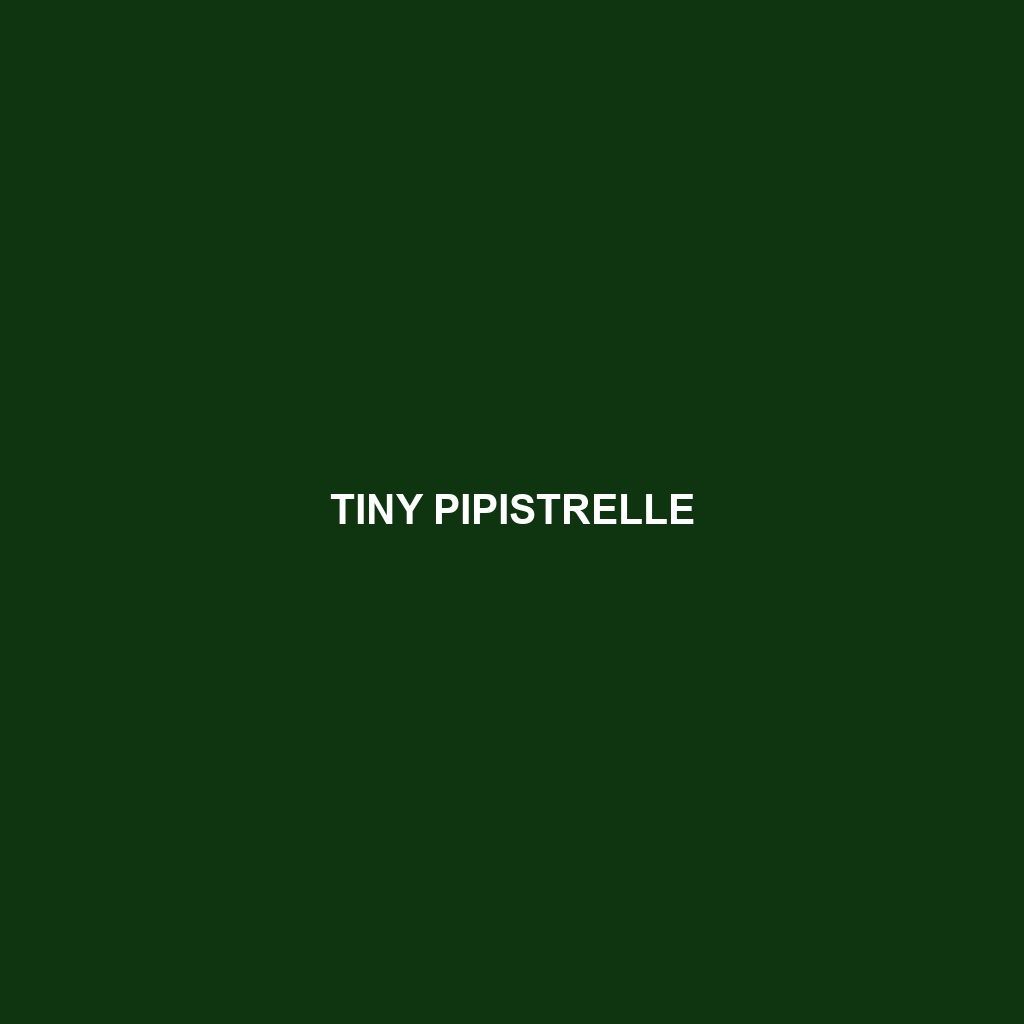Tiny Pipistrelle: A Fascinating Bat Species
Common Name: Tiny Pipistrelle
Scientific Name: Pipistrellus pygmaeus
Habitat
The Tiny Pipistrelle is primarily found in various habitats across Europe and parts of Asia. Commonly inhabiting woodlands, rural areas, and urban parks, this small bat species prefers areas with abundant flying insects, making riverbanks and gardens ideal locations. They are also frequently observed roosting in crevices of buildings and trees, showcasing their adaptability to diverse environments.
Physical Characteristics
Measuring around 3 to 8 grams, the Tiny Pipistrelle is one of the smallest bats in Europe. With a wingspan of about 20 to 25 cm, its body is covered in a soft, dark brown fur that appears lighter on the underside. Distinctive features include its pointed ears and short snout, which contribute to its remarkable echolocation abilities. The Tiny Pipistrelle’s small size and subtle appearance make it a unique species among the bat family.
Behavior
The Tiny Pipistrelle is known for its agile flight and nocturnal habits. It typically emerges at dusk to forage for food, utilizing its sophisticated echolocation to detect and catch prey on the wing. These bats are social creatures, often roosting in colonies, and exhibit a lively level of interaction, which can often include vocalizations. Their behaviors are vital for pest control, as they consume a significant amount of insects during their nightly hunts.
Diet
Primarily insectivorous, the Tiny Pipistrelle feeds on a variety of small flying insects, including moths, beetles, and mosquitoes. Its diet plays an essential role in controlling insect populations, thereby contributing to human comfort and ecosystem balance. The hunting strategy employed by this bat involves rapid flight and precise maneuvering, allowing it to capture insects mid-air effectively.
Reproduction
The breeding season for Tiny Pipistrelles typically occurs in late spring. Females give birth to one or two pups after a gestation period of approximately six to eight weeks. These pups are born blind and helpless, relying heavily on their mothers for warmth and nourishment. Post-birth, mothers create nursery roosts, where they care for their young until they are capable of independent flight and foraging.
Conservation Status
Currently, the Tiny Pipistrelle is listed as Least Concern by the International Union for Conservation of Nature (IUCN), but they face threats from habitat destruction and pesticide use. Ongoing conservation efforts are essential to maintain healthy populations and ensure their habitats are preserved.
Interesting Facts
The Tiny Pipistrelle is not only one of the smallest bats but also can consume up to 3,000 insects in a single night. This remarkable feeding capability helps maintain ecological balance. Additionally, these bats are often the first to emerge in the evening, making them an integral part of the night-time ecosystem and a subject of interest for wildlife enthusiasts.
Role in Ecosystem
Tiny Pipistrelles play a crucial role in local ecosystems as pollinators and pest controllers. Their diets significantly impact insect populations, which can help regulate crop health and reduce the need for chemical pest control methods. By maintaining ecological balance, these bats contribute to the overall health of their ecosystems, demonstrating their vital importance in nature.
